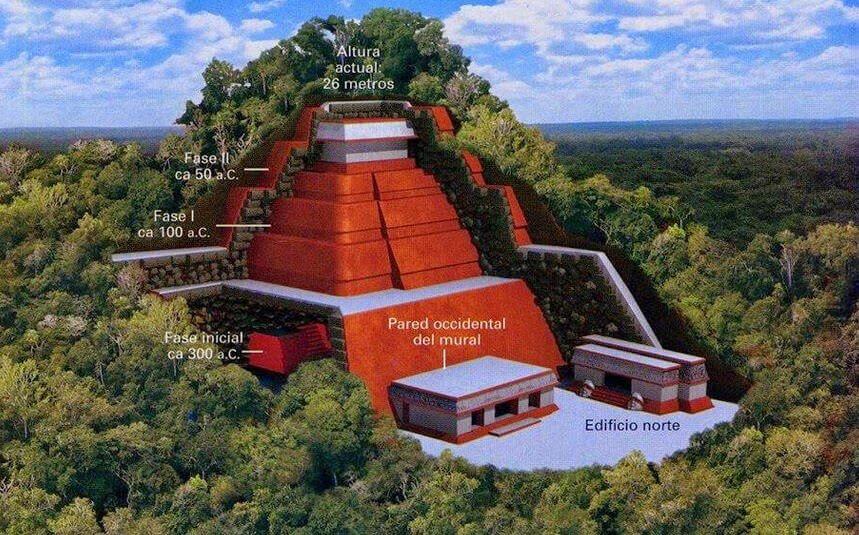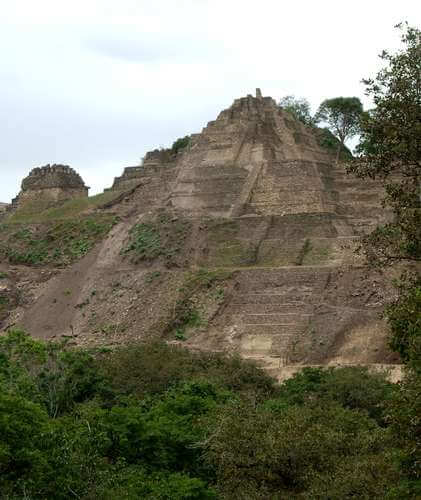
Researchers Confirm: The Largest Pyramid In Mexico Has Been Found
Researchers discover immense pyramid in Mexico, larger than Teotihuacan’s Pyramid of the Sun.
Researchers in Mexico have discovered a Pyramid that, according to initial measurements, is larger than the Great Pyramid of the Sun in Teotihuacan. Initial excavations were done in 2010.
The Pyramid, 75 meters in height, was explored by specialists from the National Institute of Anthropology and History (INAH) on the acropolis of Tonina, Chiapas, estimated to be around 1700 years old.
Emiliano Gallaga, director of the archaeological zone, explained that work has been done in the last two years, and by means of a “three-dimensional, researchers verified that in the north-eastern part of the site, stands one of the largest construction in Mesoamerica, comparable in size only to great Mayan cities like Tikal and El Mirador in Guatemala.

Another feature which makes this “unique” prehispanic pyramid stand out are the seven platforms which integrate it and were specific spaces intended to serve as palaces, temples, housing and administrative units.
It is a unique structure for various specific functions within the social, political, economic and religious structure, which is not repeated in any other archaeological site in the Mayan world stated researchers from INAH.
The ‘Passage To The Underworld’ Discovered Beneath The Pyramid of The Moon In Teotihuacán
“It’s a big surprise to see that the pyramid was done almost entirely by pre-Hispanic architects and, therefore, is more artificial than natural.
“This is because it was believed that the entire structure was a natural hill, but recent evidence has revealed that the structure was almost entirely built by ancient inhabitants.
Archaeologists added that the pyramid is bigger than we had anticipated. The structure is connected by roads located on top of surrounding elevations.
Gallaga added that, after all of the information, we can confirm that this pyramid exceeds in height the pyramid of the Sun at Teotihuacan which measures 65 meters. INAH researchers have determined that the city centre had an architectural continuity between 10 and 12 hectares, which is the double of what was previously thought and mainly corresponds to the south facade of the Acropolis, one of the most important Mayan areas known to researchers.
* * *
NEXT UP!
Graham Hancock: Ancient Civilization Wiped Out By Massive Comet 22,000 Years Ago
Graham Hancock is a popular name on the list of archaeologists and researchers who dared to look at ancient history with a different view. He became the loudest voice in the argument against the accepted chronology of the development of human civilization. He presented evidence of how a massive celestial object completely wiped out a human civilization much older than known settlements.
Mr. Hancock proposed many alternative theories that might not please the mainstream archaeologists. For example, he said that some ancient structures such as the “Great Sphinx” were actually remnants of a much older stage of human civilization that existed before the end of the last Ice Age. He based his theory on the correlation between cultural and geological events between different sites as distant as Indonesia, Turkey, Egypt, and India. These indicate that a human civilization lived much earlier than it is claimed by scientists.
In other words, mankind had developed advanced civilizations long before the emergence of the Mesopotamian and Egyptian civilizations that mainstream archaeology believes were the very beginnings of human civilization.
* * *
READ MORE: El Tajín: The Lost City of The “Thunder” & A Mysterious People
Interesting! The Hidden River of Mercury At Teotihuacan: Path To The Royal Tombs?
Enjoyed it? Please take a moment to show your support for Collective Spark.
We’d love to hear from you! If you have a comment about this article or if you have a tip for a future Collective Spark Story please let us know below in the comment section.
